Confessions of a Chookaholic, Part One: Why a quality coop is a good investment
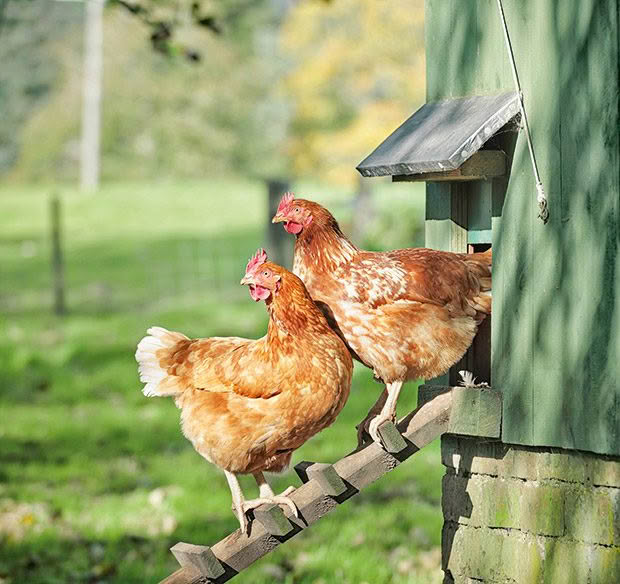
A lot of long-time poultry owners have common regrets. The coop consistently tops the list.
Words: Nadene Hall
A good coop is often the biggest investment people make when they start keeping poultry, and it’s very easy to make an expensive mistake. Always have a coop, feeder, waterer and a secure run (or good fencing) before you buy any poultry.
SIZE
While the minimum coop area per bird under animal welfare rules is quite small, slightly bigger than an A4 sheet of paper, most people who keep poultry want something more generous, around 0.7m² (80cm x 80cm) for three adult large-breed hens (weight up to 4kg).
If you’re buying a coop online, sight unseen, it’s important to check its dimensions and floor area. Sometimes, the recommended numbers of bird that the manufacturer claims can fit in a coop, may mean your birds are more crammed than you wish.
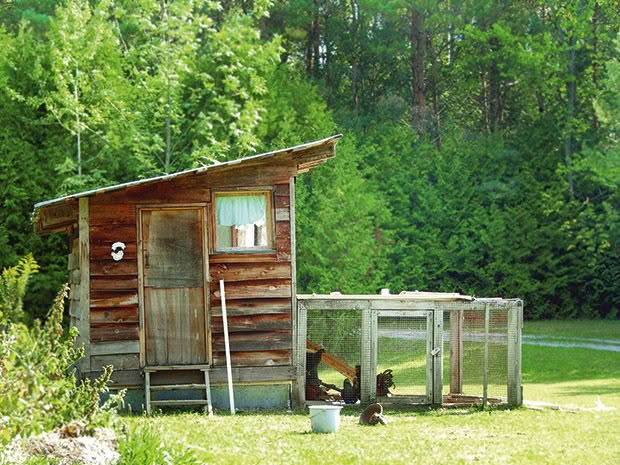
If you’re buying a small coop, get one at least twice the size you think you’ll need.
There’s also the issue of flock size. You may think you want three hens (the minimum number we’d recommend), but poultry-keeping is very addictive. It can quickly lead to regrets about your coop choice, because you’ll need to extend it, and buy another one (or two, or more).
Ideal: 0.7-1.0m² for 3 birds
ACCESS
Cleaning a coop and treating it for mites is a messy, tedious job. But it’s made much harder if you can’t easily access the inside. Many designs are low to the ground and have small doors, making it difficult to wash it out and apply mite treatments effectively.
Some designs that look attractive have a lot of fussy details: fancy trim, multiple compartments, complex rooflines, different angles, tongue and groove cladding. But every join in a coop is somewhere dirt, dust, manure, and (worse) mites can congregate. All must be cleaned and treated, but even applying a liquid product into the tiny gaps where mites hide can
be difficult.
Ideal: a coop that you can walk into, or easily access by removing the roof or a wall; one with as few joins/fussy details and rough timber as possible; one with a wide door for wheelbarrow access (to bring in and take out floor litter).
NESTING BOXES & PERCHES
These are commonly the worst mite-infested areas, so you want them to be easy to remove. Nestboxes need to be big enough to hold a 10cm+ litter layer, and have a high lip at the front so hens can snuggle in behind it. They should be in the darkest, most private part of the coop (a hen’s preference when it is time to lay).
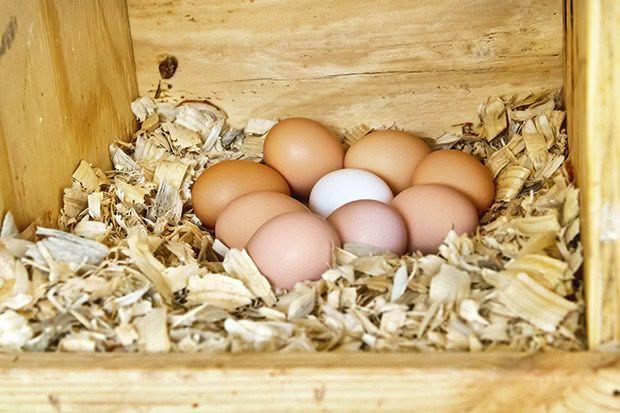
Sometimes, if a coop is too small, it’s also too light inside. Hens prefer to lay in a dark place and may choose somewhere else, often a hidden spot in your garden.
Large plastic containers or 20-litre buckets on their side can make good, easy-to-clean nest boxes. Perches need to be sturdy so your poultry feel confident when they fly up to sit on them. It’s also best if the perches are easily removeable for cleaning and mite control (as mites hide in the gaps where perches join the wall).
8 MORE TIPS TO A GOOD COOP
1. Invest in a good quality coop, one that can cope with someone falling against it or bumping it with a wheelbarrow or ride-on mower. Look for thick plastic or treated plywood (or similar), and good quality framing and roofing.
2. Choose the location carefully. The first thing that disappears around a coop is grass, and in its place will be mud (winter) or dust (summer). Choose a spot with good drainage, not too far from your house (preferably alongside your vegetable garden and/or orchard). However, you want it to be far enough away that dust isn’t a problem, and poultry won’t try to invade the house.
3. Have good fences around your poultry run/free range area, or good fences around your vegetable garden and house. Poultry are curious and have quite destructive beaks and feet for scratching up and eating gardens plants. They also produce a lot of manure which they will prefer to deposit on pathways, decks, and in the house.
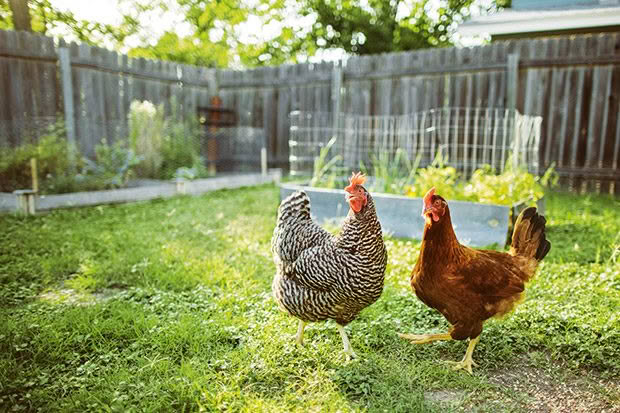
4. Wide doorways so you can easily roll a wheelbarrow in and out.
5. A coop needs a good ventilation system. Poultry release a lot of moisture as they breathe out, so you need air movement (not a draft) to help keep your coop dry and mould/bacteria-free. Vents at the top and bottom of the walls (usually flaps on hinges with props to hold them open) are the best option.
6. Have a contingency area for when a bird gets sick or injured like a large wire dog crate so you can keep it away (or at least protected) from the flock. You may also want to have a second, smaller, mobile ‘tractor’ if you are going to have a hen hatch eggs.
7. Insulation is another good option if you live somewhere with temperature extremes. Consider something that can be easily removed and treated for mites, eg polystyrene panels.
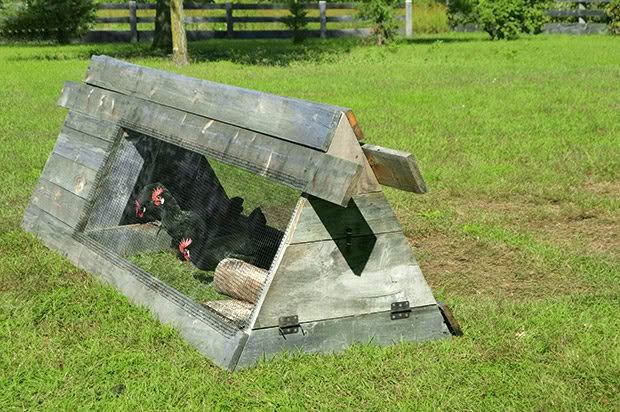
8. Get one with a door (to prevent predators entering during the night) – you can buy or make automatic-opening doors which will let your hens out later in the morning if you have to leave early for work, and then close it up again after dark.
9. A large wire dog crate (minus the tray) can also double as a good ‘broody’ cage. When a hen wants to sit on eggs to hatch them, she stops laying and goes ‘broody’, a hormonal change which raises her temperature (to help her hatch the eggs). Placing her in a wire cage, raised off the ground on bricks, helps to lower her temperature, even if she sits and snuggles. It should have food and water and be in a dry, sheltered but airy place.
TIP
If you have a coop with lots of joins and/or tongue and groove cladding, one way to make it more user-friendly is to paint it with a waterproof paint (ideally, white) and use a sealer to fill in the joints. This prevents mites crawling into small gaps and laying eggs.
Infestations are also easier to see and treat, and the coop will be easier to clean as dirt/manure/dust won’t get stuck in rough timber.
CONFESSION
“When building our first coop, we only built one nest box, and made a tiny door into it. It made cleaning the nest box a nightmare. Thankfully we have built a second coop now and corrected the previous errors. Also, at the time we had a small back courtyard we let them roam free in. We didn’t realise we’d end up with no grass left!”
– Katie, Christchurch (6 hens)
Love this story? Subscribe now!
 This article first appeared in NZ Lifestyle Block Magazine.
This article first appeared in NZ Lifestyle Block Magazine.
